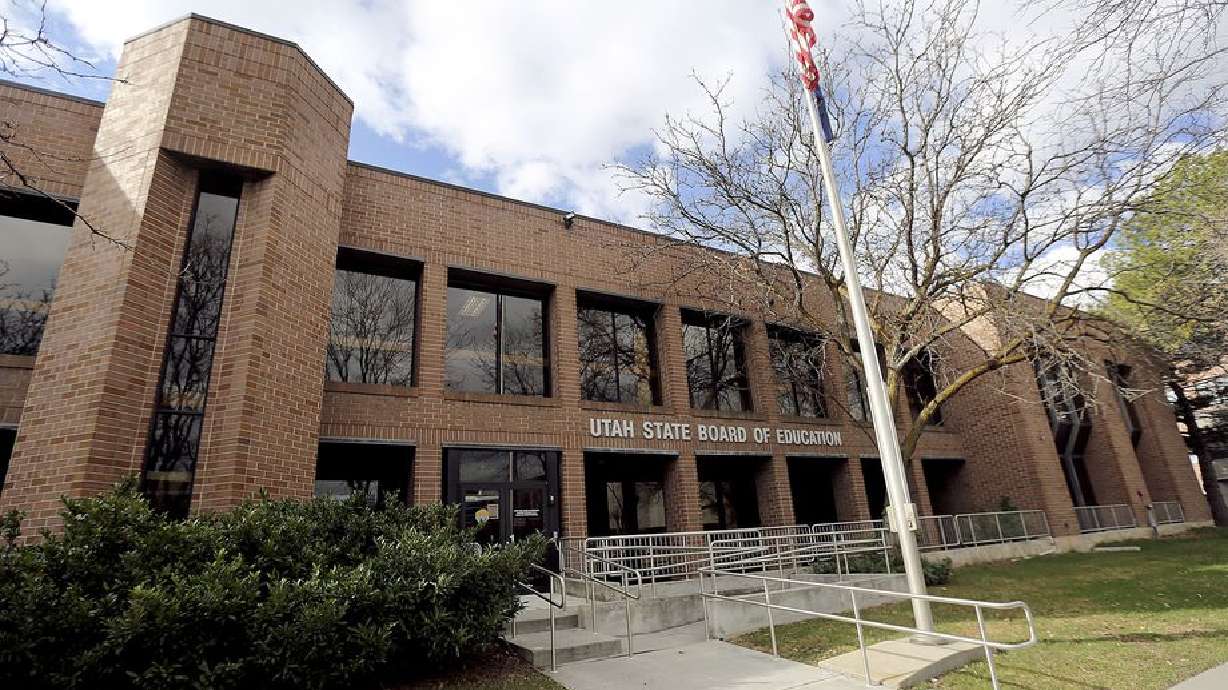Estimated read time: 4-5 minutes
This archived news story is available only for your personal, non-commercial use. Information in the story may be outdated or superseded by additional information. Reading or replaying the story in its archived form does not constitute a republication of the story.
SALT LAKE CITY — Voices for Utah Children announced its opposition to constitutional Amendment G Monday, noting it does nothing to solve the state’s real problem: that all programs that serve Utah children are “dangerously underfunded.”
“A major question we have to ask is, if the current constitutional earmark has failed to help Utah invest more in education, how will getting rid of it improve matters?” queried Utah Children CEO Maurice “Moe” Hickey, a former president of the Park City Board of Education.
Amendment G seeks to amend the Utah Constitution to expand the constitutional earmark on income tax to also include programs for children and Utahns with disabilities. In 1946, Utahns earmarked income tax for K-12 education. In 1996, Utahns approved a constitutional amendment that expanded the earmark to also include higher education. Constitutional amendments are approved by majority vote of Utah voters.
Senior policy analyst Anna Thomas said Utahns don’t have to be math whizzes “to see that the general arithmetic of Amendment G, and the attendant promises of somehow more investment in everything that helps kids, doesn’t add up.”
“We have multiple unmet early education investment obligations right now. Beyond that, we have many more needs for children and for people with disabilities that we must be sensitive to as a state, especially during a global pandemic.”
Thomas questioned how the state could responsibly invest in its children and future “by having more expenses come out of the same pot of money — which the Legislature tells us every year is too small to help all the Utah families we advocate for.”
She added, “Until that math is made transparent to the public, we have to judge Amendment G to be, at best, half-baked in its current incarnation.”
Jessie Mandle, health policy analyst for Voices for Utah Children, which launched in 1985, said children need health care coverage and care to succeed in school.
“Without greater clarity, more detail and planning, we are left to ask, are we simply moving the funding of children’s health services into another pool, competing with education funding, instead of prioritizing and investing in both critical areas?” Mandle said.
Health Policy Analyst Ciriac Alvarez Valle said there is much work to do to extend health care coverage among Utah children.
“Utah has one of the highest rates of uninsured children in the country at 8%, or 82,000 children, and we have an even higher rate of uninsured Latino children at almost 20%. It is alarming that even during this pandemic, children and families are going without health insurance,” Alvarez Valle said.
Related:
Alvarez Valle said there are many ways to reverse the negative trend, which began in 2016, such as investing in culturally and linguistically appropriate outreach and enrollment in communities of color; covering children regardless of immigration status; and ensuring children are covered all year so there is no gap in their coverage.
“By doing these things we can ensure that kids have a foundation for their long-term health and needs. It’s vital that we keep children’s health at the forefront of this issue, knowing that kids can only come to school ready to learn if they are able to get the resources they need to be healthy.”
Fiscal Policy Analyst Matthew Weinstein said survey data from the Utah Foundation show that 74% of Utahns oppose cutting taxes further and are ready and willing to pay higher taxes to help solve the state’s current challenges in areas like education, air quality and transportation.
Weinstein said the finding was consistent with a Deseret News/Hinckley Institute of Politics poll conducted prior to the economic slowdown and school closures necessitated by the COVID-19 pandemic, and as legislative leaders were contemplating income tax cuts during the 2020 General Session.
The poll found that only 10% of Utahns wanted to see surplus state income tax revenues used for a tax cut. The poll was conducted Feb. 24-March 1 by independent pollster Scott Rasmussen of 1,000 registered Utah voters.
Utah has one of the highest rates of uninsured children in the country at 8%, or 82,000 children, and we have an even higher rate of uninsured Latino children at almost 20%. It is alarming that even during this pandemic, children and families are going without health insurance.
–Ciriac Alvarez Valle, Health Policy Analyst
It points out “an interesting divergence” between the public “where there’s a very common sense, realistic understanding ... that you don’t get something for nothing, and our political leadership, which in this case, in Amendment G, is promising more for everyone in an election year.”
Backers are saying “nobody has to pay anything, or promising more money for education. They’re promising more money for social services. ... How does the math work? How is it possible to get something for nothing?” Weinstein said.
Supporters of Amendment G say income tax is the least stable source of education funding and the constitutional amendment will protect and stabilize funding for education, children and individuals with disabilities for years to come.
According to arguments for Amendment G authored by Sen. Dan McCay, R-Riverton, and House Majority Whip Mike Schultz, R-Hooper, expanding services funded through income tax acknowledges the increasing importance of physical and mental health for academic success.
For more information about Amendment G, visit the state elections website.










